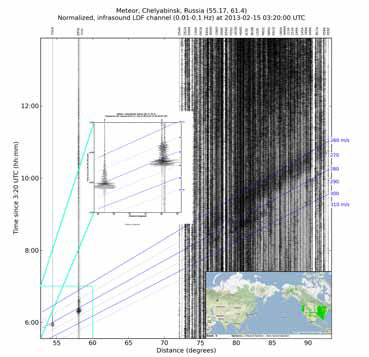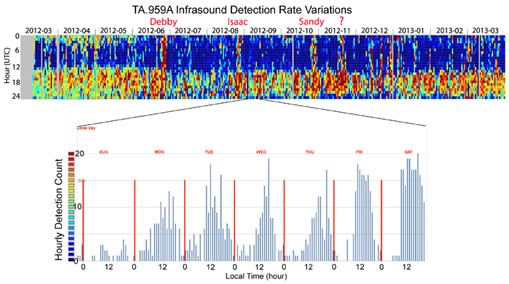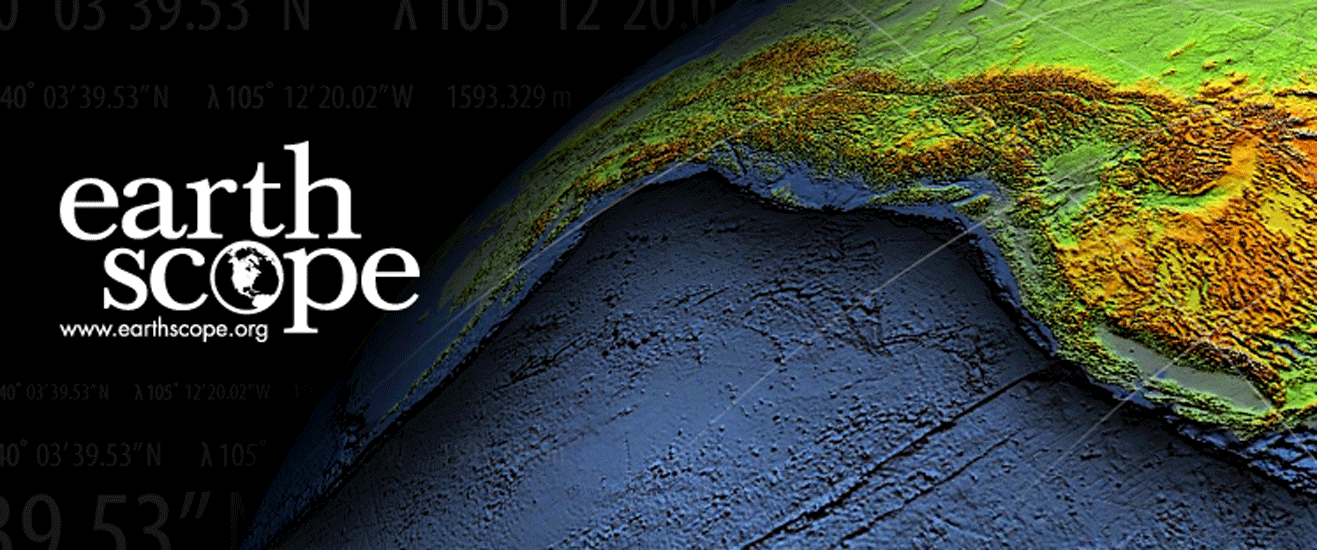By Manochehr Bahavar and Chad Trabant - Summer 2013
Diverse natural and man-made acoustic sources such as large explosions, rocket launches, and meteorites can act as sources of infrasound (frequencies below audible 20 Hz) energy. Signals from such sources can be detected over very long distances and often complement seismic data in addition to providing research opportunities in low-frequency acoustics.

Starting in 2011, infrasound sensors became a standard component and were installed at each new USArray Transportable Array (TA) site. Currently, with over 400 sensors, TA acts as a large infrasound array that continuously samples the wavefield of atmospheric acoustic sources. To support this new data set, the IRIS Data Management Center (DMC) has developed two infrasound data products: the TA Infrasound Reference Event Database (TAIRED) and TA Infrasound Detections (TAID). These two data products are designed to provide insight and tools for researchers to begin working with this large, and somewhat unique, new data set.
TAIRED (http://www.iris.edu/spud/infrasoundevent) is a user-supported evolving infrasound reference event depository where researchers can contribute to and find infrasound events for their research. This database currently holds 59 events including one meteorite, seven explosions, and 12 rocket launches. For each event, metadata, infrasound and seismic record sections, location map and a list of stations are provided. A recent addition to this database includes the Russian meteorite at Chelyabinsk (about 8,000 km away from the main TA cluster) that highlights the ability of the infrasound signals to travel long distances and the effectiveness of the TA infrasound sensors to record such signals (Figure 1).

TAID (http://www.iris.edu/dms/products/infrasound/detector) is an infrasound data product that regularly (with a 24-hour delay) scans TA broadband infrasound channels and generates station-based weekly detection lists. Researchers can scan these lists to build their own infrasound events or produce animations or images (Figure 2) that reveal patterns of infrasound signal passage or changes in background noise levels (change in detection rates).
The examples presented here from these two products illustrate the importance of the TA infrasound data and the ability of the DMS infrasound data products to facilitate their use.





